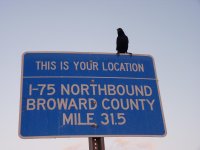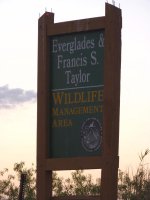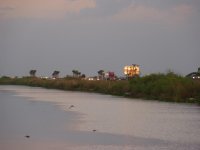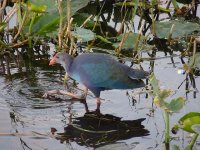It is between Miami and Naples, on the long straight stretch where the freeway crosses the Everglades. The pictures show the location around sunset.
Purple Swamphens are a rapidly spreading, originally introduced species, like a larger version of the Purple Gallinule, but with red legs and a larger red beak. They are cute when they hold the stems to nibble on. Notice the thin stem between the toes of the foot that is out of the water.
I don't know whether the native species does that as well. Purple Swamphens are listed as "non-countable", but I don't care. I just love the birds. But I was surprised to find both the native and the originally introduced "purple" (actually they are more blue than purple) rails at the same spot. Which is why I started this thread.








